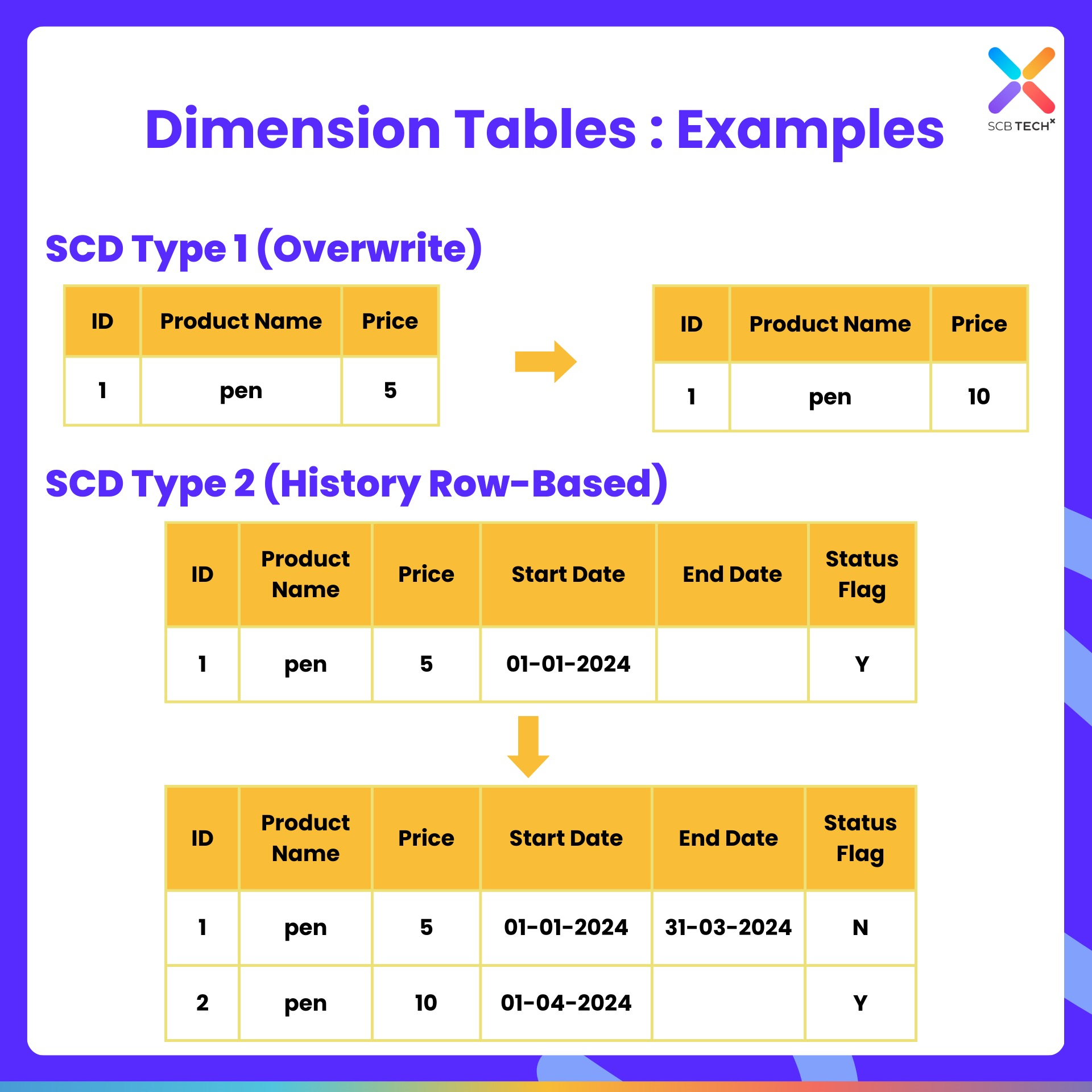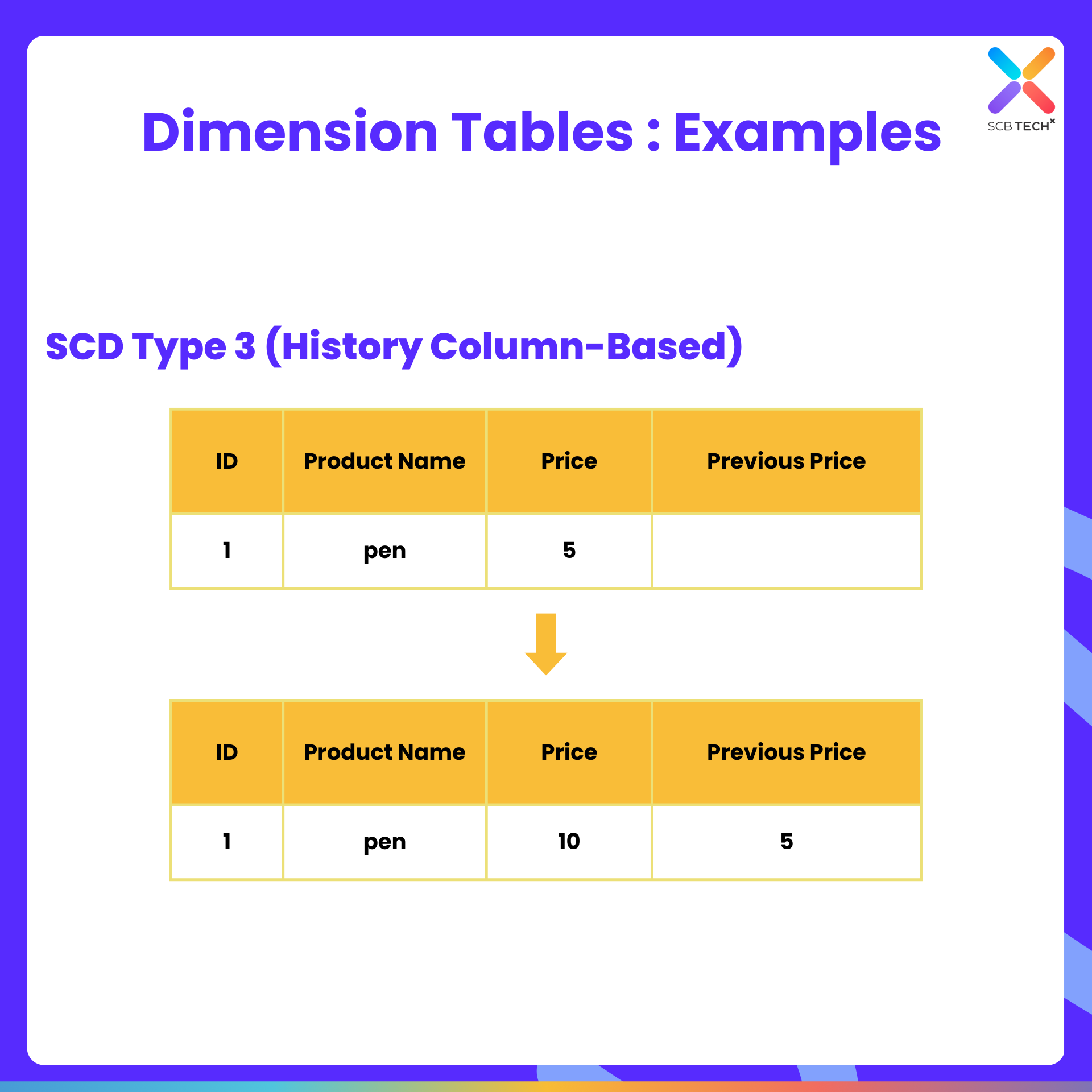
Currently, many organizations use Data Warehouses to store and analyze large amounts of data. Therefore, designing Dimension Tables in the Data Warehouse to better analyze data according to Business Requirements is crucial. Today, we invite Khun. Bright Surasee Intarawat, a Data Engineer from SCB TechX, to share techniques for designing Dimension Tables using the Slowly Changing Dimensions Concept (SCD) to efficiently manage changing data in Dimension Tables, such as phone numbers and addresses. Here are three simple types:
- SCD Type 1 (Overwrite): This design focuses only on the latest data. When data changes, outdated data is immediately overwritten with new data.
- SCD Type 2 (History Row-Based): A popular type, this design adds rows and columns to store history, including a surrogate key, start date, and end date. This allows us to check which rows are outdated. Alternatively, a flag column can be created for easier checking. When data changes, old data is kept, and new data is added in a new row, enabling us to track data changes.
- SCD Type 3 (History Column-Based): This design adds columns to store old and new data within the same row.


There is no single best method among these three types; it depends on the specific use case. Implementing SCD helps businesses track data changes for better analysis or to check data in case of system issues.
Lastly, SCB TechX is ready to provide any organization with professional advice, technology solutions, and comprehensive Data Platform services through TechX Data & AI Solutions.
If you are interested, please feel free to contact us at contact@scbtechx.io
Or visit us for more details at https://bit.ly/3QjtHgl





